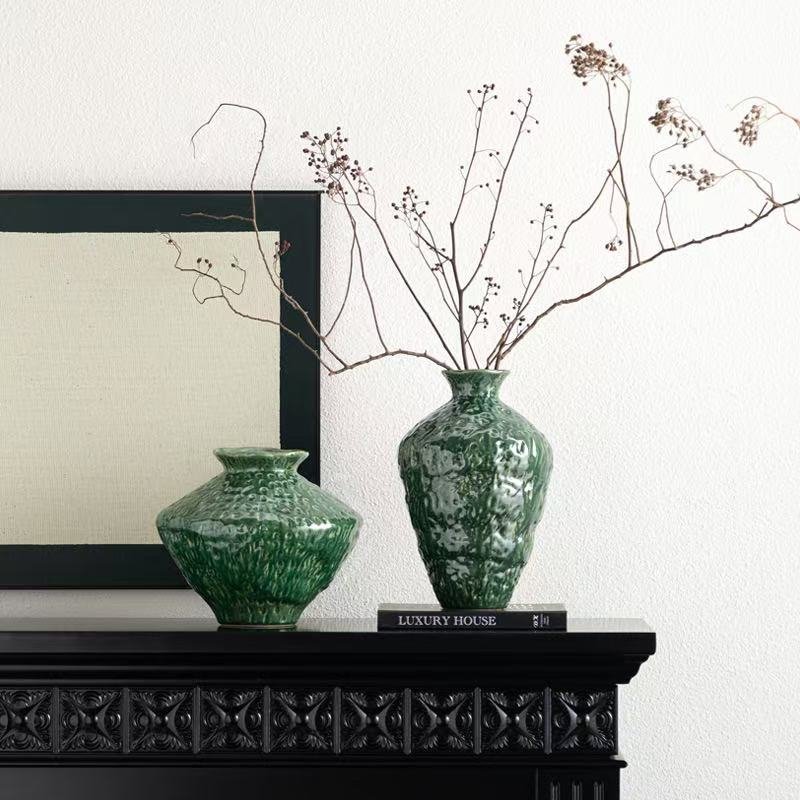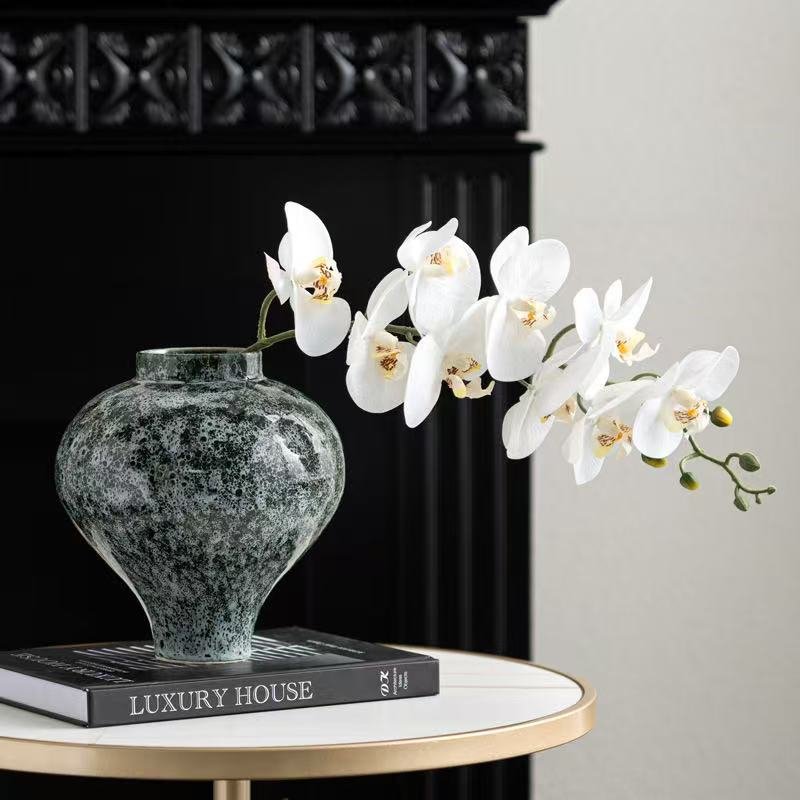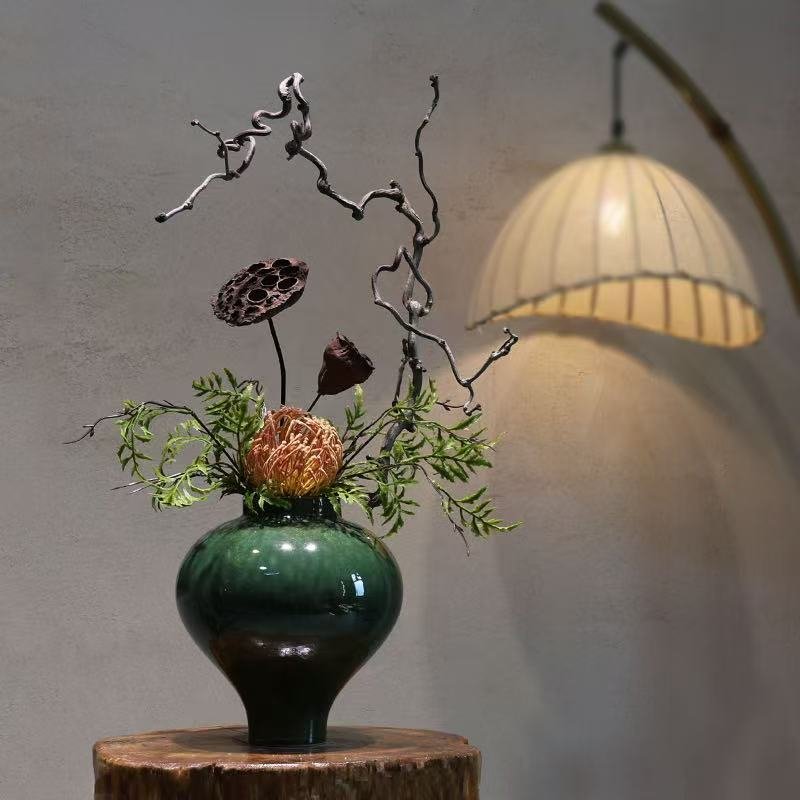The Song Dynasty (960-1279) is the golden age of Chinese aesthetics. Its artistic pursuit is “simple” as beauty and “rhythm” as soul, achieving a perfect unity of philosophy and craftsmanship in ceramic art. As a combination of daily utensils and spiritual carriers, Song Dynasty porcelain vases are not only practical items, but also a condensation of the cosmology, natural view and life aesthetics of Song Dynasty literati. Through the analysis of its shape, glaze color, decoration and craftsmanship, we can get a glimpse of the core of Song Dynasty aesthetics – Taoism follows nature, implicit and restrained, and the unity of man and nature.
1. Simple shape: cosmic order in geometry
The shape of Song Dynasty porcelain vases abandoned the richness and splendor of the Tang Dynasty and turned to minimalist geometric lines, such as the slender and upright plum bottle (meiping), the streamlined curve of the jade pot spring bottle, and the round and full gall bottle. These shapes, with mathematically precise proportions, create a visual sense of harmony, which implicitly conforms to the rational spirit of “studying things to gain knowledge” in Song Dynasty Neo-Confucianism.
- Plum bottle: Its broad shoulders, inward waist, and outward foot shape not only conform to mechanical stability, but also resemble a plum blossom about to bloom, which is a metaphor for the “thin and lofty” character of literati.
- Yuhuchun bottle: Its neck is as slender as a willow, its belly is as round as the moon, and its lines are like the “ups and downs” in calligraphy, showing the vitality of “softness with strength”.

These shapes are not simply the pursuit of formal beauty, but through geometric abstraction, the mountains, rivers, plants, and human body curves in nature are transformed into the language of objects, reflecting the philosophical pursuit of “using objects to carry the truth” in Song Dynasty aesthetics.
2. The charm of glaze color: thousands of atmospheres in monochrome
Song Dynasty porcelain is famous for its monochrome glaze, abandoning the gorgeousness of Tang Dynasty tri-color and pursuing the purity and subtle changes of glaze color. This aesthetic of “replacing all colors with one color” originates from the Taoist idea of ”the great way is the simplest” and the realm of “emptiness” in Zen Buddhism.
- Ru kiln sky blue glaze:
The color of “sky blue after rain” of Ru porcelain, the glaze surface is as warm as jade, and the cracks are like ice cracks, which is regarded as “a dialogue between nature and man”. Its color inspiration comes from the sky after the rain. The cracks naturally formed in the glaze layer during firing are regarded by literati as a metaphor of “the impermanence of heaven”, giving the objects a sense of life. - Jun kiln kiln-changed glaze:
The Jun porcelain, which “enters the kiln with one color and leaves the kiln with thousands of colors”, blends glaze colors such as purple red and sky blue, like the sunset, and like the beginning of chaos. This uncontrollable kiln-changed effect is just like the Taoist admiration of “natural inaction” – the craftsman only provides the conditions of fire and soil, and the final form is left to nature. - Official Kiln Powder Green Glaze:
The glaze color of official kiln porcelain is like “thousand peaks of green”, and the thick glaze accumulation forms a contrast of “purple mouth and iron foot”, and the glaze cracks are sparse and dense. This “defective beauty” was actively accepted by Song Dynasty literati and regarded as “perfection in imperfection”, which is similar to the “wabi-sabi” aesthetics of later Japanese generations.

3. No decoration: artistic conception creation in blank space
Song Dynasty porcelain vases rarely use complex decorations, and only the glaze color and shape are beautiful. Even if there are decorations, they are mostly implicit shallow reliefs or dark carvings, such as lotus petals on Ding kiln white porcelain and peony branches on Yaozhou kiln celadon. These decorations are mostly located on the shoulders or bottom of the objects, and the main body is left blank for a large area, forming a contrast between “virtual and real”.
- No pattern is better than pattern: Song Dynasty porcelain advocates “no decoration is a wonderful place”, and the plain glaze is like a blank scroll, leaving room for the viewer’s imagination. This “blank” aesthetic is in line with the “distant mountains without cracks, cold forests are sparse” in Song Dynasty landscape paintings, both of which use “emptiness” to trigger “existence”.
- The pattern must have meaning: A few patterns have symbolic meanings. For example, the lotus represents “coming out of the mud without being stained”, and the bamboo symbolizes “being humble and restrained”. These images are in line with the ideal of “cultivating oneself and cultivating one’s character” of Song Dynasty literati, making the utensils a materialized carrier of moral spirit.

4. Exquisite craftsmanship: humility in the extreme
The porcelain making technology of the Song Dynasty reached its peak, but it always regarded “hiding skills in clumsiness” as the highest realm. For example:
- Thin body and thick glaze: The “plum green” glaze of Longquan Kiln needs to be glazed multiple times and fired at high temperature. In the end, the body is as thin as paper and the glaze is as thick as jade, but it does not show off, but is gentle and humble.
- Cracks can be controlled but not controlled: The “gold wire and iron wire” of Ge Kiln requires precise control of kiln temperature and cooling speed, but the final direction of the cracks is still determined by heaven, reflecting the Confucian ethics of “doing one’s best and listening to heaven’s will”.
This extreme pursuit of technology and awe of nature coexist, which is the ultimate embodiment of the “unity of man and nature” in Song Dynasty aesthetics-man can comprehend the way of heaven, but cannot override nature.

5. Modern inspiration of Song Dynasty porcelain aesthetics
The aesthetic paradigm of Song Dynasty porcelain vases still has profound inspiration for contemporary design:
- Simplicity is advanced: no need to pile up decorations, convey beauty through materials and proportions themselves.
- Respect the laws of nature: For example, the contingency of kiln-changed glazes prompts modern people to rethink the relationship between technology and nature.
- Objects are spirit: A vase is not only a container, but also a cultural symbol and a place for the soul to live.
Conclusion
Song Dynasty porcelain vases are a model of how Song Dynasty literati injected philosophical thinking into daily life. With simple shapes, implicit colors, restrained patterns, and exquisite craftsmanship, they construct an aesthetic system that transcends the times. This aesthetics is not only about visual enjoyment, but also a meditation on the universe, life, and morality. As Song Huizong said: “It is difficult to describe the spirit in ink and color”, and Song Dynasty porcelain, with mud and fire, wrote a silent aesthetic epic.


